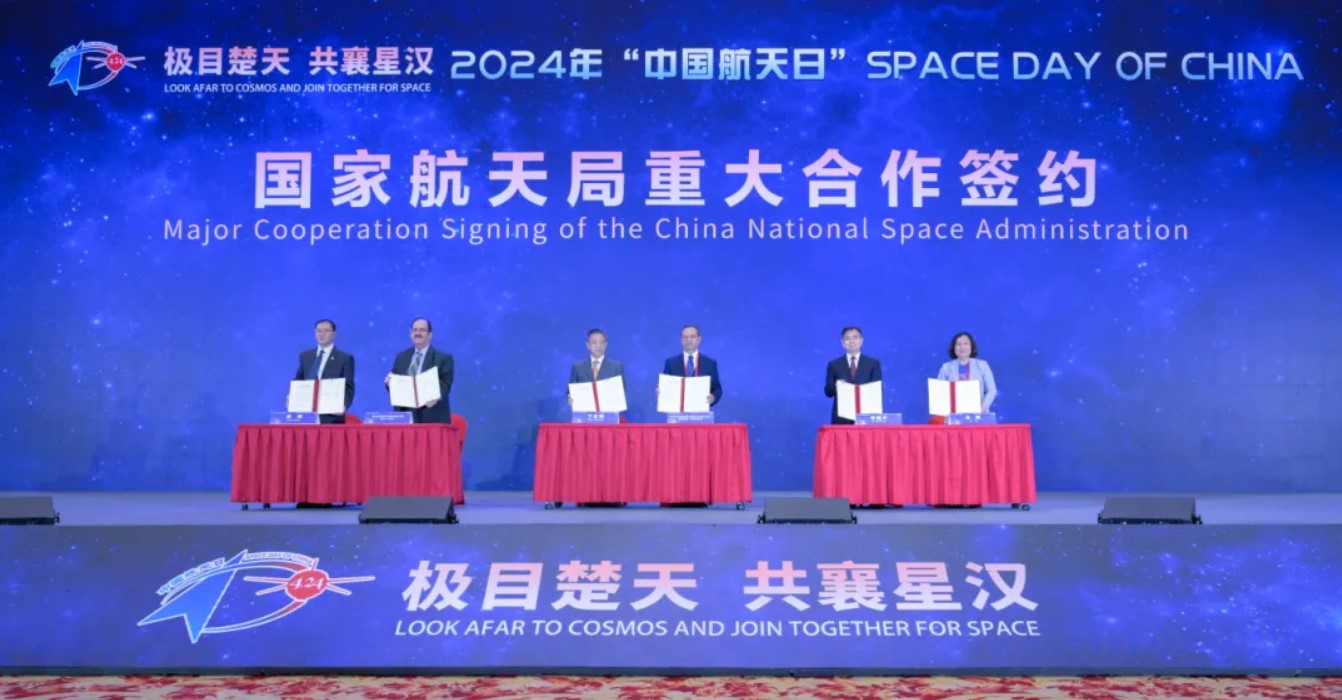HELSINKI — Central American state Nicaragua has joined the ILRS moon base program as China continues its push to attract partners for the project.
The China National Space Administration (CNSA) also reached agreements April 24 with the Asia-Pacific Space Cooperation Organization, headquartered in Beijing, and the Arab Union for Astronomy and Space Sciences. The agreements were reported by Chinese state media.
The parties will engage in various aspects such as engineering implementation, operation, and application of the International Lunar Research Station (ILRS). Details of how ILRS members will engage in the project are likely to be determined with the formal establishment of a coordinating organization.
The backdrop for the development was the first “China-Latin America and Caribbean Countries Space Cooperation Forum,” in Wuhan, Hubei province. Wuhan is also hosting a China Space Conference, April 24-26, as part of the country’s national space day event.
APSCO, an intergovernmental organization with members including agencies from Bangladesh, China, Iran, Mongolia, Pakistan, Peru, Thailand and Turkey, is understood to have previously committed to joining the ILRS.
The China-led ILRS envisions constructing a permanent lunar base in the 2030s, with precursor missions in the 2020s. These include Chang’e-7 around 2026 and the later Chang’e-8 in-situ resource utilization technology test mission. Both multi-spacecraft missions will target the lunar south pole.
Nicaragua becomes the 10th country to join the ILRS. Nicaragua’s space-related activities are limited, due to its economic and technological constraints. It does however utilize space technologies and data, engages in regional and other space activities and fora, and is a signatory to the Outer Space Treaty.
China and Russia formally announced the joint ILRS project in St. Petersburg, Russia, in June 2021. Venezuela, Pakistan, Azerbaijan, Belarus, South Africa and Egypt signed up during 2023. Thailand signed up early this month. China has also attracted a number of organizations, universities and companies to join ILRS.
The trend of countries signing to the ILRS up reflects a wider Chinese diplomatic focus on the Global South. Subnational partners could also provide a route to wider influence and cooperation. The University of Sharjah of the UAE is a member, while the UAE itself is an Artemis signatory and involved in the Gateway.
New south pole mission partners
CNSA also announced new participants in the Chang’e-7 mission to the lunar south pole set for 2026. There will be six international payloads from seven countries and international agencies. These are Egypt, Bahrain, Italy, Russia, Switzerland, Thailand, and the International Lunar Observatory Association (ILOA).
Russia will contribute a lunar dust and electric field detector developed by the Russian Academy of Space Sciences. Italy’s involvement will be a passive laser retro-reflector, also aboard the lander. A similar instrument will be on the Chang’e-6 mission due to launch May 3.
ILOA, already part of the ILRS, recently had a demonstration astronomical payload aboard Intuitive Machines’ Nova-C lander which landed on the moon in February. That landing mission backed by NASA’s Commercial Lunar Payload Services (CLPS) program. ILOA will similarly have a telescope on the Chang’e-7 lander.
A hyperspectral imager is being jointly developed by the Egyptian Space Agency and the Bahrain National Space Science, a moon-based dual-channel Earth Radiation Energy Spectrometer developed by the Physical Meteorological Observatory Davos (PMOD). A space weather global monitoring will be developed by National Astronomical Research Institute of Thailand (NARIT). Both will be aboard the Chang’e-7 orbiter.
Chang’e-7 will feature an orbiter, a lander, a rover, support from Queqiao-2, and a mini-flying probe. The mission will target Shackleton crater near the lunar south pole.
Related
Read the original article here



